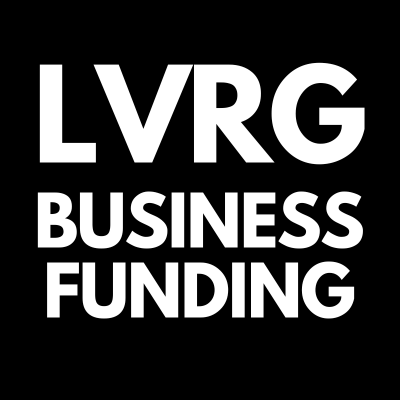Sorry to Burst Your Bubble, but Here Are the Real Reasons Your Business Isn't Growing (and It's Not the Economy's Fault)
In the world of business, growth is the holy grail. Entrepreneurs dream of expanding their ventures, reaching new markets, and increasing profits. However, despite best efforts, many businesses find themselves stagnating or even declining. While it's easy to blame external factors like the economy, often the root causes lie closer to home. In this piece, I’ll explore some common reasons why businesses fail to grow and offer strategies to overcome these obstacles.
Lack of Clear Vision and Strategy:
A business without a clear vision and strategy is like a ship without a rudder, drifting aimlessly.
Solution: Define a clear vision statement and develop a strategic plan outlining goals, objectives, and tactics to achieve growth.
Failure to Adapt to Market Changes:
Markets are constantly evolving, driven by changes in consumer preferences, technology, and competition.
Solution: Stay agile and responsive to market dynamics by continuously monitoring trends, gathering customer feedback, and adapting your business model accordingly.
Inadequate Marketing and Branding:
Effective marketing and branding are essential for attracting customers and differentiating your business from competitors.
Solution: Invest in targeted marketing campaigns, build a strong brand identity, and leverage digital channels to reach and engage with your audience.
Poor Customer Experience:
Customers are the lifeblood of any business, and delivering exceptional experiences is crucial for fostering loyalty and driving growth.
Solution: Prioritize customer satisfaction by offering personalized services, resolving issues promptly, and soliciting feedback to identify areas for improvement.
Insufficient Operational Efficiency:
Inefficient processes and operations can hinder productivity, increase costs, and impede growth potential.
Solution: Streamline workflows, automate repetitive tasks, and invest in technology and training to enhance operational efficiency and scalability.
Lack of Innovation:
Innovation is the engine of growth, driving product development, process improvement, and market expansion.
Solution: Foster a culture of innovation within your organization, encourage creativity and experimentation, and allocate resources to research and development initiatives.
Poor Financial Management:
Sound financial management is essential for sustainable growth, including budgeting, cash flow management, and investment decisions.
Solution: Develop robust financial processes, seek professional advice when needed, and regularly review and adjust financial strategies to support growth objectives.
Weak Leadership and Team Dynamics:
Effective leadership and cohesive teamwork are critical for driving organizational success and navigating challenges.
Solution: Invest in leadership development, foster open communication and collaboration among team members, and cultivate a positive work culture that encourages accountability and innovation.
While external factors like the economy can certainly impact business performance, often the biggest barriers to growth are internal. By addressing issues such as lack of vision, failure to adapt, poor marketing, customer experience, operational inefficiencies, innovation, financial management, and leadership, businesses can unlock their growth potential and thrive in any economic environment. It's time to burst the bubble of excuses and take proactive steps to propel your business forward.
So, now what? Well, if you want your business to grow and be successful, there are several key actions you need to start implementing starting right now:
Invest in Continuous Learning and Development:
Stay updated with industry trends, emerging technologies, and best practices.
Encourage your team to participate in training programs and workshops to enhance their skills and knowledge.
Prioritize Customer Satisfaction:
Focus on delivering exceptional customer experiences at every touchpoint.
Listen to customer feedback, address their needs promptly, and strive to exceed their expectations.
Embrace Innovation and Creativity:
Foster a culture of innovation where employees feel empowered to generate new ideas and solutions.
Experiment with new products, services, and processes to stay ahead of the competition.
Build Strong Relationships:
Cultivate meaningful relationships with customers, suppliers, and partners based on trust and mutual benefit.
Networking events, partnerships, and collaborations can open doors to new opportunities and growth.
Set Clear Goals and Strategies:
Define specific, measurable, achievable, relevant, and time-bound (SMART) goals for your business.
Develop strategic plans outlining the steps required to achieve these goals and regularly review progress.
Optimize Operational Efficiency:
Streamline workflows, eliminate unnecessary tasks, and leverage technology to improve productivity and reduce costs.
Regularly assess and refine your processes to ensure they are efficient and scalable.
Focus on Marketing and Branding:
Invest in targeted marketing campaigns to reach your target audience and promote your brand.
Build a strong brand identity that resonates with your customers and sets you apart from competitors.
Manage Finances Wisely:
Maintain accurate financial records and monitor key metrics to track performance.
Develop a budget, manage cash flow effectively, and make strategic investments to support growth.
Lead by Example:
Demonstrate strong leadership qualities by setting a clear vision, communicating effectively, and leading by example.
Foster a positive work culture that values integrity, transparency, and collaboration.
Stay Resilient and Adaptable:
Inevitably, there will be setbacks and challenges along the way. Stay resilient and learn from failures.
Be adaptable and willing to pivot your strategy or approach as needed to navigate changing market conditions.
By implementing these strategies consistently and with dedication, you can position your business for growth and long-term success in a competitive marketplace.
Written by Charles M. Barr, CEO of LVRG Business Funding


